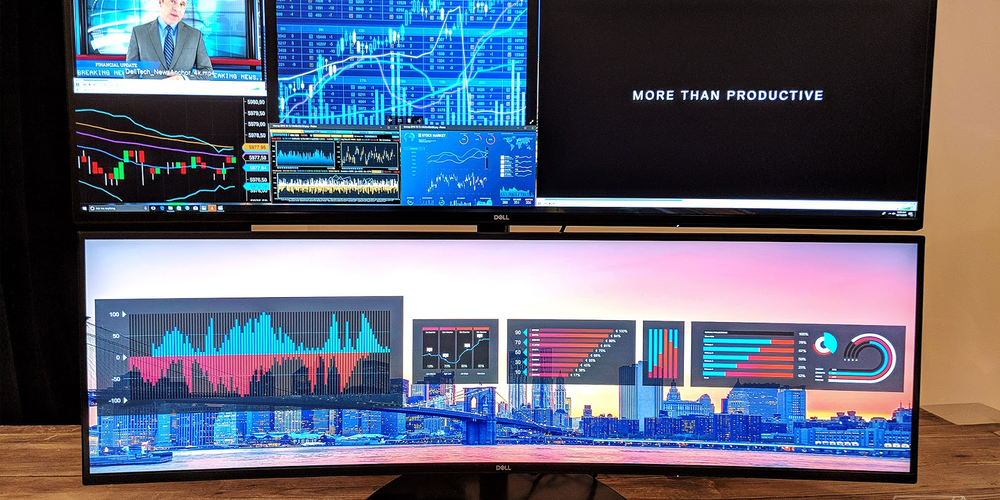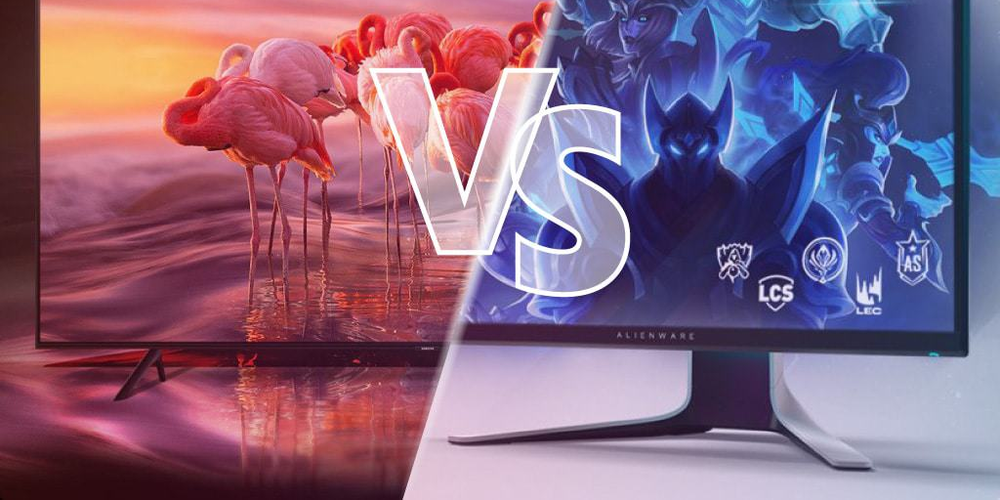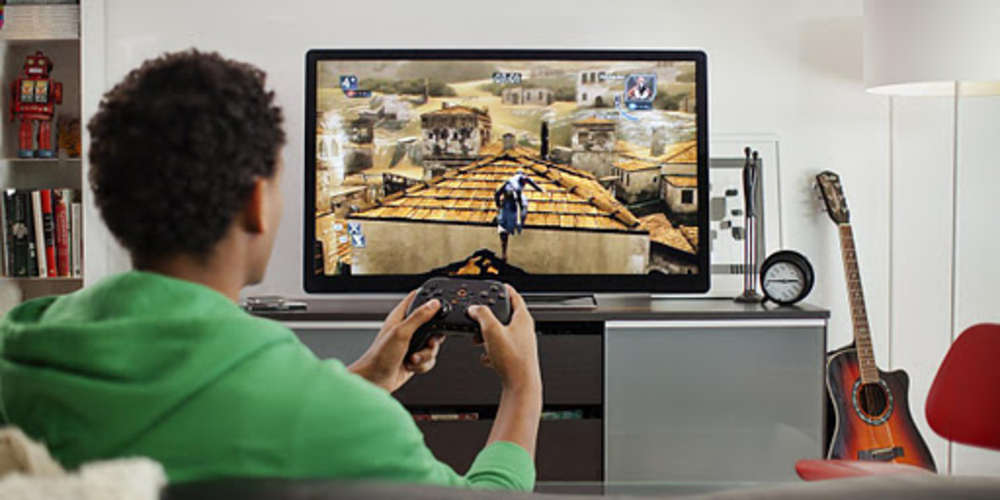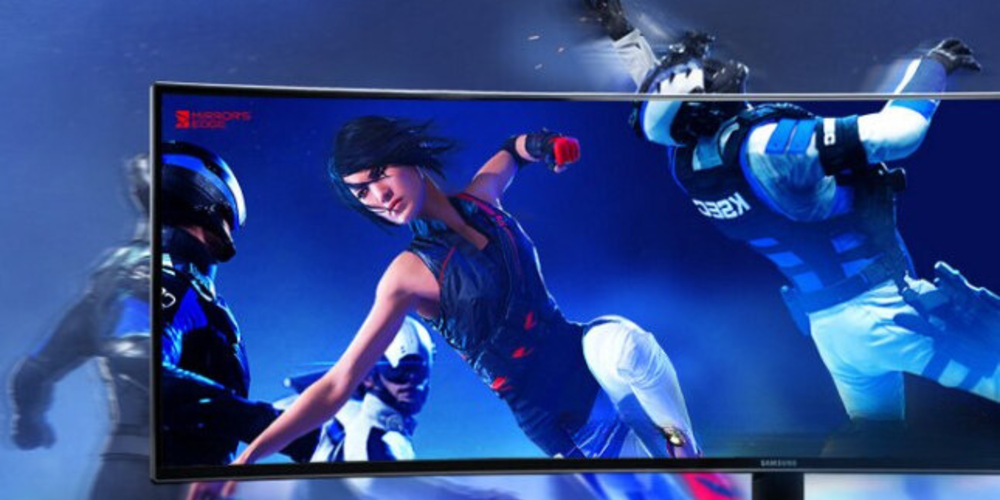Gaming Monitor vs. TV: Which One Should You Choose for Your Gaming Setup?
- 2024-05-27 11:55

Are you debating between purchasing a gaming monitor or a TV for your gaming sessions? You’re not alone. Many gamers struggle to choose between the quick responsiveness of a monitor and the superb image quality of an HDTV. This guide is designed to assist you in selecting the ideal display for your gaming setup. Whether you're on the hunt for TV deals or seeking the best gaming monitor offers in 2024, we've compiled all the essential information you need to make an informed decision.
Gaming Monitor vs. TV: Key Features and Everyday Use

At their core, both gaming monitors and TVs serve the same purpose: displaying an image from an input device. Yet, their features have significant differences.
Typical Features of Gaming Monitors:
- Inputs: HDMI and DisplayPort, occasionally DVI and VGA
- Minimal input lag
- Compact display with high pixel density
- Adjustable stands for ease of movement
- Absence of a TV tuner
Gaming monitors support a variety of inputs, primarily HDMI and DisplayPort, and sometimes DVI and VGA, though these are rare in newer models. They lack a TV tuner, so they can't display traditional over-the-air or cable TV signals.
One of the key advantages of gaming monitors is their high pixel density and near-zero input lag, thanks to minimal image processing. This results in a crisp and responsive gaming experience.
Typically, gaming monitors are smaller than TVs, making them easier to place on a gaming desk. Many come with adjustable stands that help achieve the perfect viewing angle and facilitate the use of multiple displays.
Common Features of TVs:
- HDMI input
- Larger screen size
- Remote control
- HDR and built-in speakers
- Includes a TV tuner
Modern TVs mainly feature HDMI inputs along with a TV tuner for over-the-air signals, which is a defining feature of a television.
TVs generally have larger screens, some exceeding 100 inches in diagonal size. This makes them less suitable for a desk setup. TV stands usually offer limited or no adjustment.
TVs are packed with features like remote controls, HDR support, built-in speakers, and smart functionalities that eliminate the need for external streaming devices.
Gaming Monitor vs. TV: Image Quality

While both gaming monitors and TVs deliver excellent image quality, they excel in different aspects.
TVs often outperform in brightness, contrast, and color gamut, utilizing advanced technologies like OLED panels and Mini-LED backlights. However, high-end gaming monitors are catching up with similar technologies.
HDR content benefits more from TVs, particularly mid-range models, which handle the required contrast and brightness better than most monitors.
Gaming monitors, on the other hand, have an edge in sharpness due to higher pixel density. Some 4K TVs use subpixel layouts or chroma subsampling, which can cause sharpness issues with fine text or interface elements when viewed up close.
Gaming Monitor vs. TV: Game Performance
Game performance is crucial for most gamers, and this can be broken down into three main areas: input lag, refresh rate, and pixel response times.
Input lag is the delay between user input and its appearance on-screen. Gaming monitors typically have very low input lag, while some TVs do, too. It’s essential to check reviews to avoid TVs with high input lag.
Refresh rate, measured in hertz (Hz), indicates how many times a display refreshes its image per second. Higher refresh rates result in smoother motion. While the baseline is 60Hz, budget gaming monitors often achieve 144Hz, with high-end models reaching up to 360Hz or more. Some new TVs support up to 120Hz, but many remain at 60Hz.
TVs are less likely to support adaptive sync technologies like FreeSync and GSync, which synchronize the display’s refresh rate with the input device for smoother motion.
Pixel response time, or the time it takes for a pixel to change color, affects ghosting on displays. Both gaming monitors and TVs perform similarly here, but OLED TVs have an edge with near-instantaneous pixel response times.
Gaming Monitor vs. TV: Movies & Streaming TV

TVs come with a range of features and modes to enhance and customize the viewing experience, including motion smoothing, various HDR modes, and color gamut options. These settings can often be saved per input. Monitors, on the other hand, offer fewer and less accessible image quality adjustments.
Most modern TVs include smart features and apps for direct content access, eliminating the need for an external device. Some even offer built-in game streaming capabilities.
The remote control is another advantage of TVs, providing easy access to features like volume control, game mode, and image quality adjustments from a distance. While some gaming monitors include a remote, its functions are usually limited.
Though gaming monitors can deliver great visuals for movies and streaming, they lack the versatility, customization, and convenience of a TV.
Gaming Monitor vs. TV: Ergonomics and Multiple Displays
Gaming monitors are designed for use on a desk and are often equipped with ergonomic stands that offer height, swivel, tilt adjustment, and even 90-degree rotation for portrait orientation.
This design makes gaming monitors ideal for multi-display setups. While TVs can technically be used in similar setups, their basic stands and lack of adjustability make them less practical. Wall-mounting a TV requires a sturdy third-party stand or arm, which can be costly.
Adjusting a TV for the best viewing angle can be challenging, especially if used on a desk. This could lead to reduced image quality, particularly for TVs with narrow viewing angles.
Gaming Monitor vs. TV: Latency

Latency, or input lag, is the delay between pressing a button on an input device and seeing the result on-screen. Displays significantly contribute to latency, making low-latency options crucial for gaming.
Gaming monitors generally have much lower latency than TVs, often adding only a few milliseconds of delay due to minimal image processing.
TVs can have substantial latency, sometimes over 100 milliseconds. However, recent improvements mean many top-tier TVs now offer excellent latency comparable to gaming monitors. For example, the LG C4 OLED has latency on par with many gaming monitors.
While gaming monitors consistently offer low latency, modern TVs are catching up. It’s wise to check latency reviews for specific TVs before purchasing and to use Game Mode for reduced latency.
Gaming Monitor vs. TV: Value
Budget-conscious gamers will find more options in gaming monitors. Models like the LG UltraGear 27GN650 ($197) and Dell S2721HGF ($200) offer 1080p resolution and refresh rates up to 144Hz. Comparable TVs, like the 43-inch Insignia F30 ($190), lack features such as high refresh rates and adaptive sync.
Affordable TVs with gaming features include the Hisense 55U8G ($699) and TCL 5-Series 55S546 ($429). These larger screens are better suited for living rooms or home theaters, whereas gaming monitors are ideal for desks.





